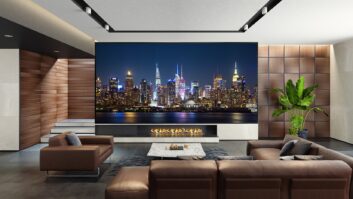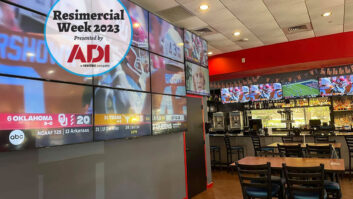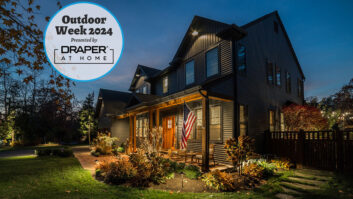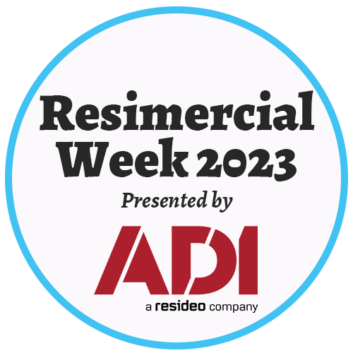
Direct-view LED displays (dvLED) are growing in popularity, but traditional projection systems still present a strong case for use in certain residential and commercial settings. Each solution offers specific performance, design, and installation merits, suit myriad applications, and deliver outstanding imaging experiences to audiences. If designed and installed correctly, you can’t go wrong with either choice. Still, there are a few important facets to consider before making your decision: dvLED, projection system, or both.
As one of those rare imaging companies that offer both dvLED displays and projectors, Digital Projection brings an objective perspective to this topic. Here’s a breakdown of the main differentiators between projectors/screens and dvLED displays on which to form your decision.
The Application and Objective
Which market are you addressing and what’s the purpose of the project? Will the display present advertising/digital signage in hospitality and retail establishments, transportation hubs, and sports venues? In these cases, a single LED display or an even larger video wall is typically the way to go. It retains image brightness, clarity, and color accuracy under high ambient light — even outdoors — which is important when grabbing the attention of and imparting important messages to passersby and patrons.
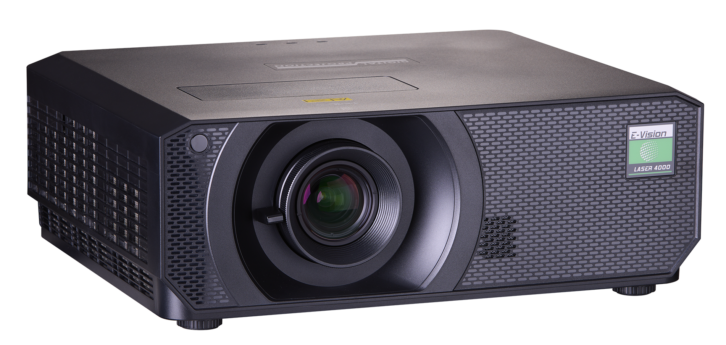
A projection screen, meanwhile, is well suited for educational, corporate, house of worship, and residential applications. In these environments, a display is often used for many different purposes, like presenting hymn lyrics one day and a live streaming performance the next, or showing movies at night and interactive fitness apps in the morning. Being able to choose from a wide range of sizes, aspect ratios, and resolutions help a projector-screen combo fit the multi-functions. Screens and projectors specifically engineered for short-throw and rear projection, for example, enable even greater flexibility and customization.
The Space & Image Size
How much room has been dedicated to the display? A large-format dvLED display, which comes in one of a few preset sizes, offers little wiggle room once the space has been defined. Variable pixel pitches do give you some leeway with viewing distance, however. (The lower the pixel pitch, the closer together the LEDs are on the display, and the closer the acceptable viewing distance can be.)
Even with limited wall space, there’s usually room for a projection screen and companion projector. They can be motorized to roll down from any location, lending remarkable installation flexibility. Another perk: Because the size of the displayed image is defined only by the projection surface and the power of the projector, you can create a seamless 200-plus diagonal image quite affordably. Certainly, you can achieve a super-size image by building a video wall comprising multiple LED panels, but it will just likely be a more expensive and complex installation. Still, it is worth considering for customers who require quick-engagement digital signage and a slick, modern aesthetic.
The Design Intent
Is your client a creative, out-of-the-box thinker? Are they looking for an interesting way to display content or enhance the design of their restaurant, lounge, or hotel lobby? Do they want to portray a trend-setting image of sophistication and innovation? LED displays are the embodiment of modern, artistic, avant-garde expression. They quickly transform an ordinary display into a unique digital work of art or an emblem of innovation with a simple twist of orientation or an unconventional layout of multiple panels. The modular panels can be arranged in a variety of patterns to convey a certain style or image. It’s a great way for you and your customers to differentiate without stepping too far out of your installation comfort zone. Even for a dvLED novice, learning the design and installation ropes isn’t too difficult given the copious amounts of instructional data, training, and service and support provided by manufacturers.

The design of projection systems is more cinematic in nature, great for clients who like the look and feel of an authentic movie-like viewing experience and need the biggest image size possible. This doesn’t mean you shouldn’t push a projection system’s design boundaries. Beyond motorizing them to conceal and reveal on command, why not try your hand at projection mapping? It’s a growing field that can put you one step ahead of your competition.
Land Bigger Jobs by Offering Both Imaging Options
Why limit your revenue potential by specializing in either projection systems or dvLED displays? By offering both, you expand your reach into new lucrative markets and can better serve your customers. And remember, in many cases, it won’t be an either/or proposition. An MDU developer, for example, might benefit from an LED video wall in their design center to showcase to potential buyers the property’s various amenities and a projection system in the community center for weekly movie nights. A luxury hotel, meanwhile, might want LED displays for the lobby, restaurant, lounge and bar, and outdoor areas, and a state-of-the-art projector and screen in an adjacent auditorium. Even owners of high-end residences recognize the modern vibe LED panels lend to their estate and the authentic, cinematic flair a projection system gives their dedicated home theater.
By building your AV business around legacy projection and new-generation digital displays and aligning with a manufacturer who can support each approach, you’ll be well prepared to provide your customers with the best viewing experience possible, whatever that may entail.


